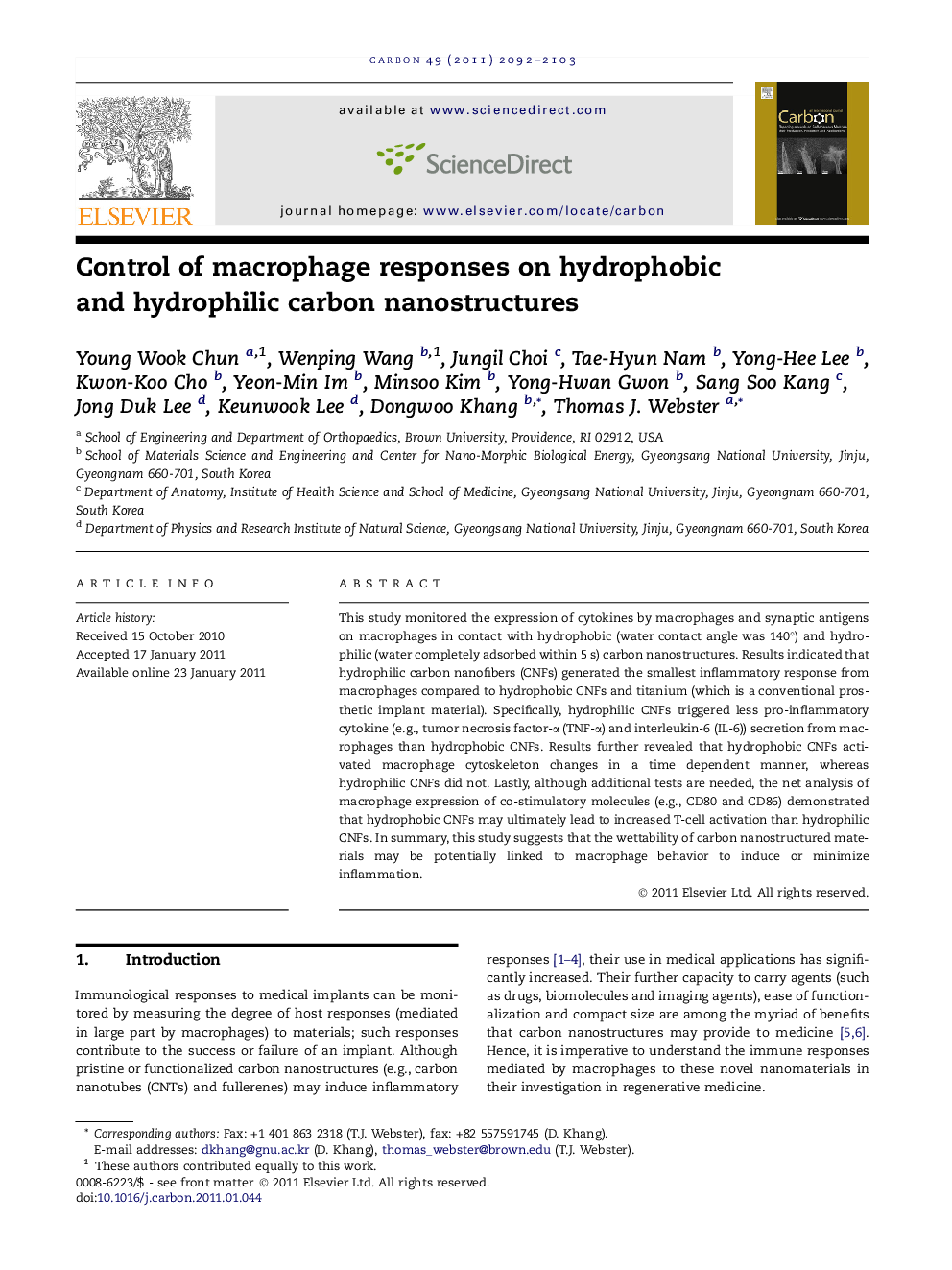| Article ID | Journal | Published Year | Pages | File Type |
|---|---|---|---|---|
| 1416112 | Carbon | 2011 | 12 Pages |
This study monitored the expression of cytokines by macrophages and synaptic antigens on macrophages in contact with hydrophobic (water contact angle was 140°) and hydrophilic (water completely adsorbed within 5 s) carbon nanostructures. Results indicated that hydrophilic carbon nanofibers (CNFs) generated the smallest inflammatory response from macrophages compared to hydrophobic CNFs and titanium (which is a conventional prosthetic implant material). Specifically, hydrophilic CNFs triggered less pro-inflammatory cytokine (e.g., tumor necrosis factor-α (TNF-α) and interleukin-6 (IL-6)) secretion from macrophages than hydrophobic CNFs. Results further revealed that hydrophobic CNFs activated macrophage cytoskeleton changes in a time dependent manner, whereas hydrophilic CNFs did not. Lastly, although additional tests are needed, the net analysis of macrophage expression of co-stimulatory molecules (e.g., CD80 and CD86) demonstrated that hydrophobic CNFs may ultimately lead to increased T-cell activation than hydrophilic CNFs. In summary, this study suggests that the wettability of carbon nanostructured materials may be potentially linked to macrophage behavior to induce or minimize inflammation.
